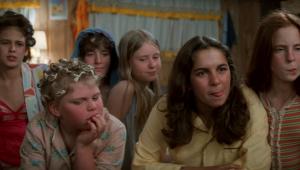Toshiba's Thin-Frame, ClearFrame LCD Page 2
 |
The Toshiba offers plenty of flexibility to adjust its picture. Along with four picture presets, there's a Preference mode that lets you tweak and store picture settings for each input. Advanced controls include both an adjustable backlight and a Dynalight setting that automatically adjusts black level based on picture content. You also get a static Gamma adjustment and Cool, Medium, and Warm color-temperature presets (along with blue and green drive adjustments for each).
The ClearFrame 120-Hz feature can be switched on in the menu. Motion Vector Frame Interpolation processing is used to derive additional frames from the incoming video signal; with a standard 60-Hz source, this effectively doubles the number of video frames being displayed per second. A Film Stabilization option also provides Standard and Smooth modes for handling film-based programs. When sending a 1080p/24 signal to the TV from a Blu-ray player, the Standard mode engages 5:5 pulldown (each original film frame that's been encoded to video is displayed five times to hit the TV's 120-Hz refresh rate). The Smooth mode, meanwhile, adds processing to eliminate the motion-judder artifacts that are part and parcel of the film-watching experience.
The TV's grayscale measurements were way off from the 6,500-K standard with its Movie preset selected (see Test Bench), so I made basic adjustments in the Preference menu and used a color analyzer to perform an ISF-style calibration. Although the Dynalight setting did a good job extending the TV's black level on dark images, it also lessened overall picture contrast by dimming highlights, so I left it off.
PERFORMANCE
With the Toshiba tweaked, I got down to business by watching No Country for Old Men on Blu-ray Disc. In an early scene where the murderous Anton Chigurh (Javier Bardem) pulls over a driver on an empty highway, the TV's crisp detail brought out the texture of both the gravelly road and the grassy border alongside it. But the image didn't merely look crisp: There was a physicality to it that made me feel like I was in that scene.
The set's post-calibration color rendition was also impressive. In a scene where Carson Wells (Woody Harrelson) visits Llewelyn Moss (Josh Brolin) in the hospital, differences between Moss's slightly sick, yellowish complexion and Wells's healthy pink skin tone were clear. And the red, yellow, and green hues of the bouquet that Wells carried with him looked natural and balanced.
Dark scenes, like one where Moss is chased by drug dealers and their dogs, also looked punchy and film-like. When the criminals cranked up their vehicles' floodlights, I could see a lot of detail in the landscape.
As a movie fan, I proceed cautiously with motion-interpolation modes on 120-Hz LCDs, some of which can impart an unnatural "sped-up" look. But Toshiba's ClearFrame feature proved effective and artifact-free at all settings, including the judder-fighting Smooth mode. As my Blu-ray player supplied a 1080p/24 signal with ClearFrame and Standard Film Stabilization enabled, pictures looked razor-sharp even in complex tracking shots along fences or across signs.
The 52XF550U delivers a wide viewing angle for an LCD TV, with pictures retaining solid contrast over a 45° arc. Its picture uniformity was also very good, with only a black test pattern showing a slight amount of uneven brightness. The set's video processing was slow to kick in when I watched both 480i standard-def and 1080i high-def movies - a situation that occasionally resulted in jagged "stairstep" effects appearing in images.
BOTTOM LINE
Toshiba's 52XF550U excels on many levels. This LCD set's thin, almost nonexistent frame makes it look good both on and off. And its strong picture detail, post-adjustment color accuracy, and shadow rendition let it compete with the other top-dog LCD models on the block. Add Toshiba's impressive ClearFrame 120-Hz processing, and you've got a TV that deserves a spot at the top of your wish list.
- Log in or register to post comments



















































